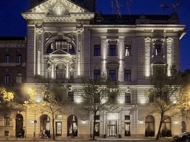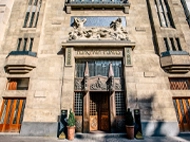
Anne Frank’s House In Amsterdam
When planning any holidays to Amsterdam, discover the place where Anne Frank hid from Nazi persecutors during the Second World War with a visit to the Anne Frank museum. Hidden away at Prinsengracht 263, a 17th-century house alongside the canal, the Franks spent more than two years in their Secret Annex here until their arrest in 1944.
Make your way through the labyrinth of small rooms and staircases to discover the rich history behind the bestselling Diary of Anne Frank. From the ground floor warehouse where employees worked and kept the secret to the attic where Anne Frank gazed out at the famous chestnut tree, every level is sure to provide an engaging and moving experience.
In Hiding
The museum was set up by Anne’s father Otto Frank, who survived the war. It was the success of his daughter’s diary that led to the restoration of the building and opening of the Anne Frank house to the public in 1960. In the Secret Annex space of just 75 square meters, Anne Frank spent 25 months hiding with eight other people in almost total silence.
Feel the silent atmosphere within the museum and experience what Frank and the hiders had to go through each day. You’ll find out more about the family’s poignant story as you walk through the fascinating exhibits and displays. Stepping inside, you’ll discover the life of a young girl whose writing continues to captivate the world over 70 years later.
Warehouse and offices
The scene is set immediately as you enter the modern side of the building where Otto Frank ran his businesses before he went into hiding. Walking through the rooms of the historic building, you’re told the story of Anne Frank through artefacts, photos and memoirs. Make your way through the original warehouse and offices on the first two floors before arriving at the storeroom where the infamous entrance to the Secret Annex is located. You can even go through the original moveable bookcase door into the Secret Annex and walk around the empty rooms, which are exactly how they appeared after the authorities removed all furniture. Try to imagine what it was like to be hidden here for such a long time as you make your way around.
Secret Annex
It was in this space that Anne Frank provided all her witty and sharp descriptions of a life in hiding. Scramble up the narrow staircases and walk around the same tiny rooms as she did. Upon returning to the Netherlands after the war, Otto Frank decided to keep the annexe unfurnished out of respect and to remind visitors that no one else returned alive after being captured.
Even with the rooms stripped bare, you can get a feel for how cramped the conditions were at the time. Walk around and you’ll feel just how difficult it must have been for eight people to sleep, cook, fight and pray for their troubles to end. Various maps, pictures and photographs that Anne used to decorate her surroundings really help to illustrate the events that took place. Some of the original wallpaper is still on display, with markings displaying Anne and her sister’s growth over time. It’s no wonder this museum is the highlight of many tourist holidays to Amsterdam.
Museum exhibits
Following on from the Secret Annex, you can take a look at the museum section. During your visit, you’ll not only find out more about Anne Frank, including accounts from those who knew her personally, but you’ll also discover more about the history of persecution across the world. The multimedia section of the museum certainly brings the story alive. Take in the history of the Nazi occupation of Amsterdam with moving videos and photographs from Dutch concentration camps.
Temporary exhibitions
The museum is committed to its ideals of educating the public on the history of World War Two and how it affected many others just like Anne Frank. In fact, the Anne Frank House provides educational projects to over 50 countries on the problems of discrimination and the importance of freedom. Before arranging holidays to Amsterdam, be sure to visit the museum’s website to find out about any temporary exhibitions that are on offer. A wide range of exhibits is available to the public, from the lives of Anne’s roommates to accounts of those that played a role in hiding the family.
Diary room
In the diary room, you can see Anne’s original writings including her famous diary. The diary was kept safe by one of Otto’s employees who returned it to him before it was published in 1947. Marvel at all original 215 pages of this UNESCO World Documentary Heritage item, written in Anne’s surprisingly grown-up hand. Along with the world-famous diary are other notebooks and papers sitting behind a glass case, with examples of diary extracts translated into various languages. You can also view Anne Frank’s other literary works such as a book of tales made up of short stories.
Shop and Cafe
All Anne Frank house tickets give you an opportunity to grab a memento of the experience. There is a wonderful gift shop that sells a wide range of postcards, posters, DVDs, and other items to mark the occasion. The centrepiece of the museum, the diary itself, is available in various languages and formats such as luxury editions. If you’re feeling peckish, you can enjoy a bite to eat at the café, which has a stunning view overlooking the Prinsengracht canal. Everything from snacks to a full meal is on offer, with hot and cold drinks available. Bear in mind however that Kosher food is not on the menu.
How to get to the Anne Frank museum
The museum is located at Westermarkt 20 by the Prinsengracht, a 15-minute walk from the Central Train Station or 10 minutes from Dam Square. You can reach Anne Frank house Amsterdam by tram 13, 14 or 17 if you alight at the Westermarkt stop.
Practical information
Before going to the museum, make sure you buy your ticket online if you’re planning to visit between 9am and 3.30pm. Tickets aren’t sold on the door during this time, but you’ll be allocated a time slot when you book via the website. Anne Frank tickets need to be booked at least two months in advance as demand for the museum is very high, especially during the high season and at weekends. As an example, the museum had almost 1.3 million visitors in 2017. As the small rooms can get cramped, if you don’t like crowds then it’s best to visit during evening hours.
More Things To Do ideas
Find more Things To Do in Amsterdam: Cycling in Amsterdam | Heineken Experience | Rijksmuseum | Vondelpark

Best hotels in Amsterdam
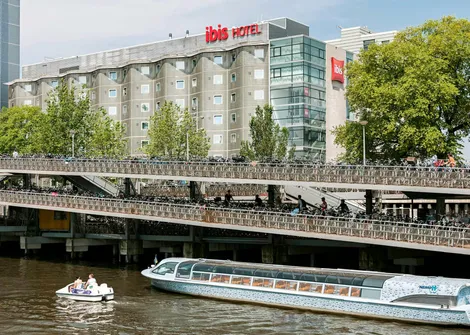
ibis Amsterdam Centre
Netherlands, Amsterdam
6755 reviews

Xo Hotels Couture
Netherlands, Amsterdam
2939 reviews

ibis Schiphol Amsterdam Airport
Netherlands, Amsterdam, Amsterdam Airport Hotels
5164 reviews
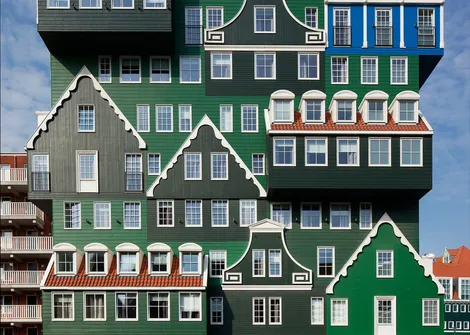
Inntel Hotels Amsterdam-Zaandam
Netherlands, Amsterdam
2191 reviews
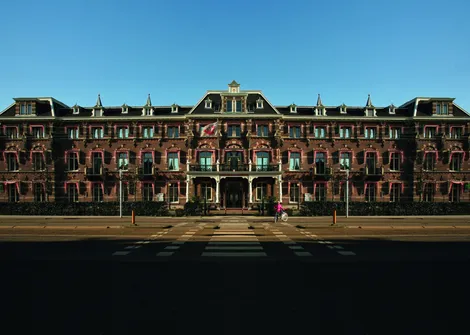
The Manor Amsterdam
Netherlands, Amsterdam
2866 reviews

Park Inn By Radisson Amsterdam City West
Netherlands, Amsterdam
1475 reviews
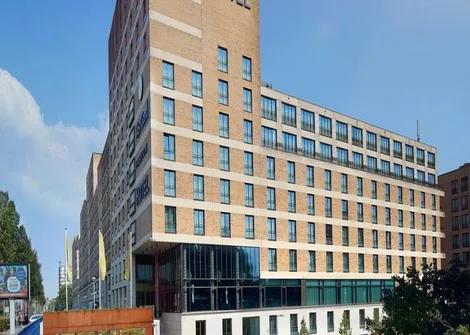
WestCord Fashion Hotel Amsterdam
Netherlands, Amsterdam
5501 reviews

Van der Valk Hotel A4 Schiphol
Netherlands, Amsterdam, Amsterdam Airport Hotels
4306 reviews

Urban Lodge Hotel
Netherlands, Amsterdam
1118 reviews
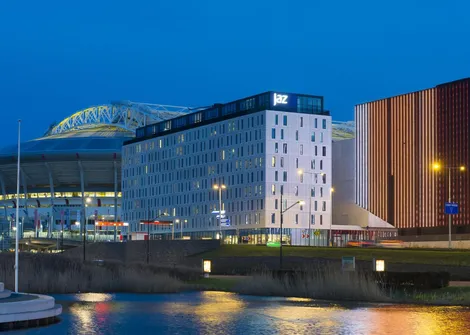
Jaz in the City, Amsterdam
Netherlands, Amsterdam
1175 reviews
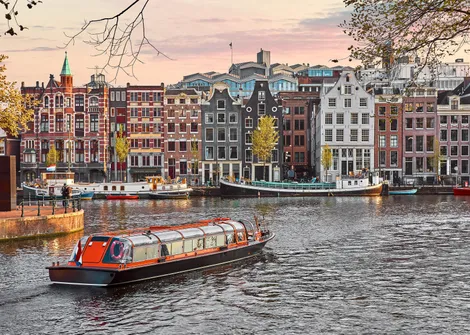
Eden Hotel Amsterdam
Netherlands, Amsterdam
681 reviews
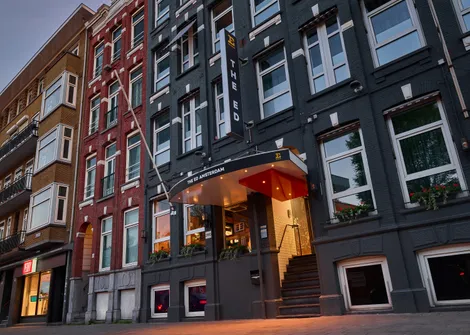
The ED Amsterdam
Netherlands, Amsterdam
539 reviews

Best Western Plus Hotel Amstelveen
Netherlands, Amsterdam
97 reviews
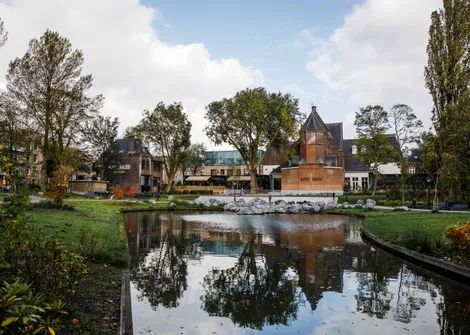
Arena
Netherlands, Amsterdam
1596 reviews

Aadam Wilhelmina
Netherlands, Amsterdam
306 reviews


